The Outer Solar System
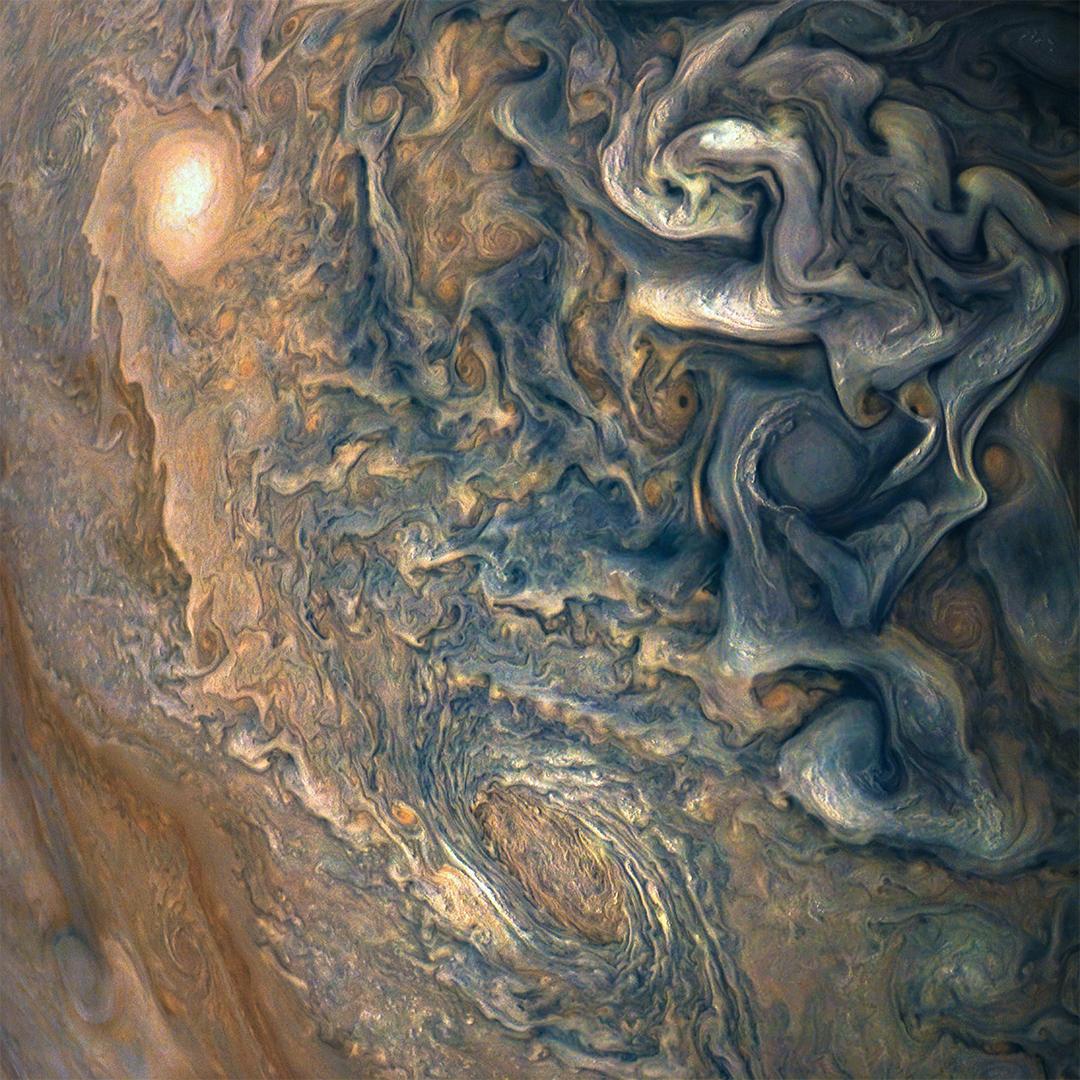
Jupiter’s atmosphere taken from NASA's Juno spacecraft (NASA)

Jupiter’s atmosphere taken from NASA's Juno spacecraft (NASA)
How does this align with my curriculum?
Learn about the amazing planets and moons of the outer Solar System.
The Outer Solar System
Our Solar System includes all the objects that the Sun pulls with its gravity. The Outer Solar System includes everything that is beyond planet Mars. This backgrounder focuses on the planets and their satellites found there.
Did you know?
A satellite is any object that orbits around a planet. It can be man-made or natural. A moon is a natural satellite that orbits a planet.
The Gas Giants
People refer to the four outer planets as gas giants and also Jovian planets. The word "Jovian" means 'like Jupiter’. As the name suggests, the gas giants are mainly made of gases. They are also at least four times the size of Earth. For these reasons, the gas giants have more in common with the Sun than they do with the rocky inner planets! Even though they are made of gas, they are not lightweights. Together, the gas giants make up 99% of the mass known to orbit the Sun.
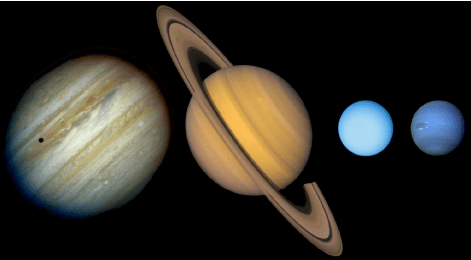
| Jupiter | Saturn | Uranus | Neptune | Earth | |
|---|---|---|---|---|---|
| Mass (1024kg) | 1 898 | 568 | 86.8 | 102 | 5.97 |
| Diameter (km) | 142 984 | 120 536 | 51 118 | 49 528 | 12 756 |
Astronomers think that Uranus and Neptune are not quite the same as Saturn and Jupiter. This is because they think these planets have large amounts of oxygen, carbon, nitrogen and sulphur. Some astronomers suggest that they belong in their own category, called ice giants. Because they are so far away, Uranus and Neptune are the least well known planets in our Solar System. In 2021, NASA plans to send the James Webb space telescope on a mission to learn more about these two planets.
Jupiter
Jupiter is named after the king of the Roman gods, who was also the god of sky and thunder. Jupiter is a giant ball of helium and hydrogen that is larger than all the other planets combined. It is home to the largest known ocean in the solar system, which is an ocean of liquid hydrogen. Jupiter has rings made of dust around it, but the rings are hard to see from Earth.
Looking at Jupiter, you can see swirls of blues and browns. These are clouds of ammonia and water, moving around in an atmosphere of hydrogen and helium.
The most recognizable feature on Jupiter is the Great Red Spot. This “spot” is a storm bigger than Earth that has been going on for hundreds of years.
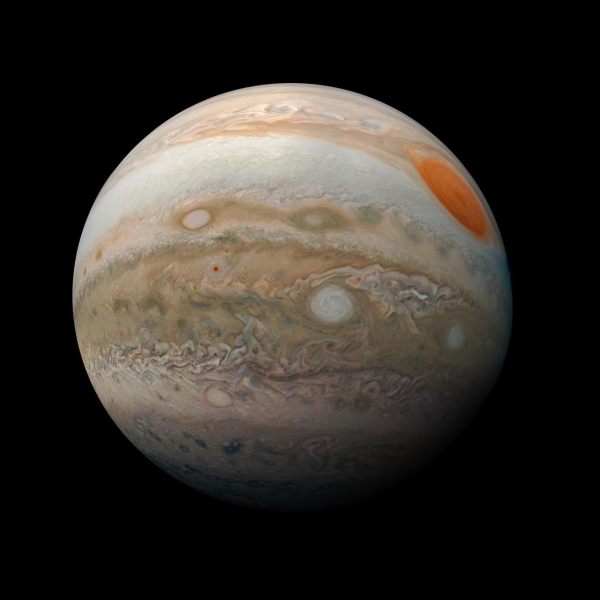
This is not the only storm on Jupiter. Jupiter has many storms. There is a well-known group of six to nine white storms in its Southern hemisphere called the string of pearls. At its North pole, you can also see a major cyclone surrounded by eight other smaller ones.
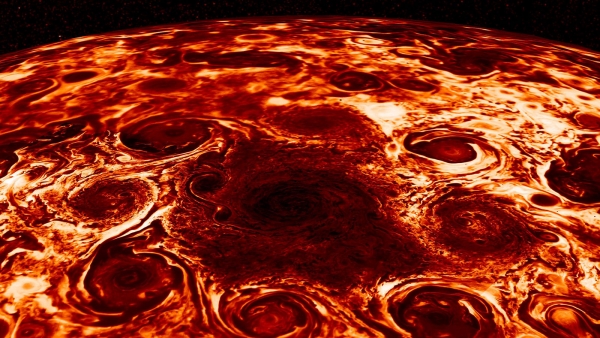
Did you know?
Jupiter has the shortest day. This means that it rotates the fastest.
Saturn
Saturn is named after the Roman god of agriculture and wealth, who was also the father of Jupiter. Saturn is the farthest planet from the Earth that was known in ancient times. While all four gas giant planets have rings around them, Saturn's are by far the most visible. Trillions of particles of rock and ice make up the rings. Like Jupiter, hydrogen and helium are the main elements that make up Saturn.
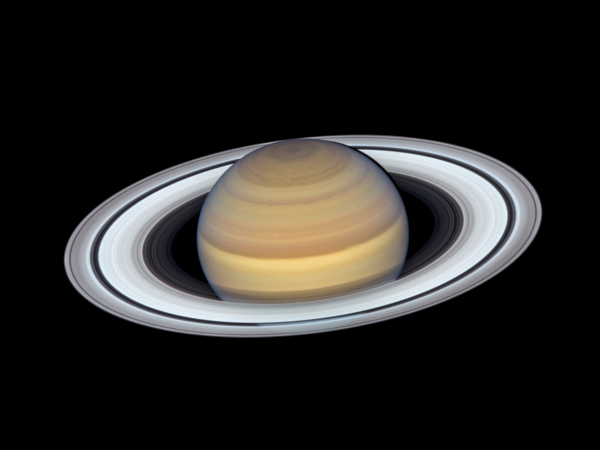
Did you know?
Twice every 29 ½ years, Saturn’s rings seem to disappear when we look at them from Earth. This is because the planet is tilted in such a way that we only see the thin edge of the rings.
A feature that was recently observed by the Cassini probe is Saturn’s “hexagon”. This is a huge hurricane found at its north pole. On the color-filtered image below, you can also see a smaller hurricane. This hurricane is twice the size of an average hurricane on Earth.
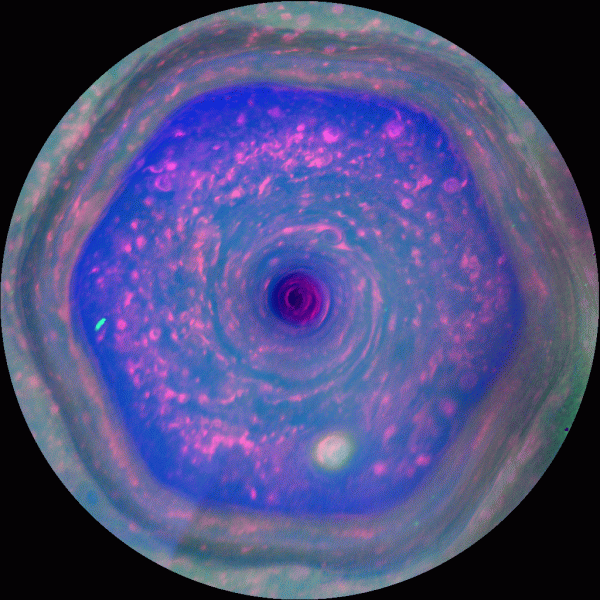
Did you know?
Space telescopes and probes use many different types of instruments and color filters. This allows them to see what a normal optical camera would not be able to see.
Uranus
Uranus (pronounced YOU-ra-nus) is named after the Greek god of the sky. It was the first planet discovered using a telescope. If you look at Uranus, its rings are perpendicular to the rings of the other gas giants. This is because the planet is actually inclined. Scientists have long wondered why this is. Today, they are using computer models to try out their hypotheses. They think that a large object in the early solar system slammed into the young Uranus. This collision could have changed how it rotated.
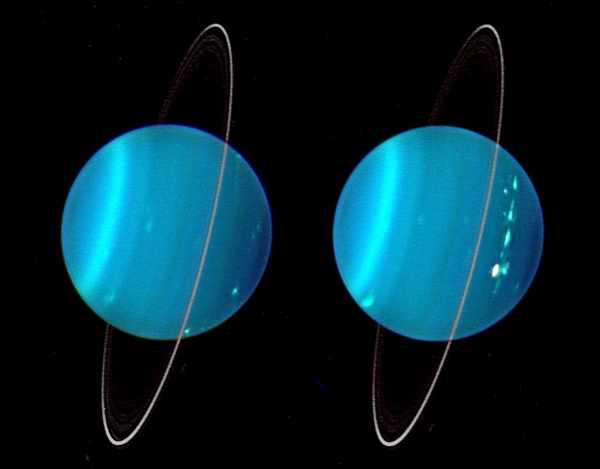
Because of its orientation, Uranus has bizarre seasons. At the north pole, winter is dark for 21 years and then summer is light for 21 years!
Neptune
Neptune is named after the Roman god of the sea. Unlike other planets, Neptune was not discovered with the eye or telescopes. Rather it was discovered using mathematics and physics. Like the Earth, other planets also exert gravity on objects around them. Without even seeing the planet, astronomers knew it must exist because of the way its gravity pulled nearby objects.
Neptune is only slightly smaller than Uranus. It also has a similar composition to Uranus.
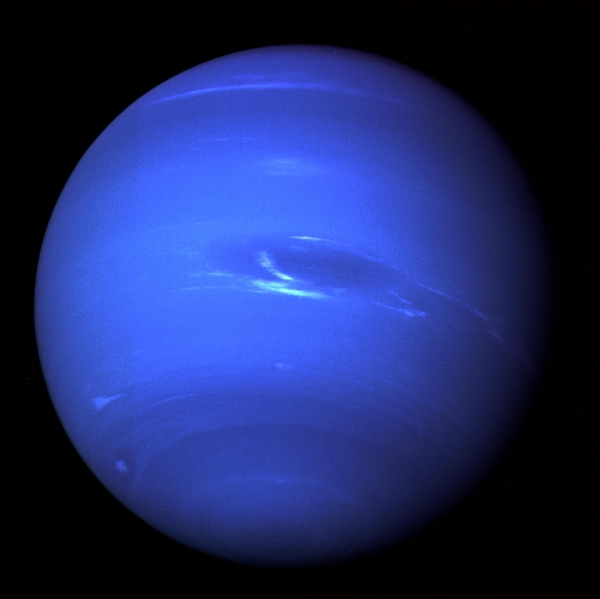
Did you know?
Neptune has the fastest planetary winds in the Solar System. They can go more than 2,000 km/h! Not only are they supersonic fast, they are made of methane. This is a gas we use as fuel on Earth!
Pluto used to be the ninth planet of our Solar System. But astronomers now classify it as a dwarf planet. Due to the shape of its orbit, sometimes Pluto is closer to the Sun than Neptune!
Satellites of the Gas Giants
The gas giants have many moons. Some of these moons are even as big as planets! The moons of gas giants have been the focus of many exploration missions in the past decades. Here is some information on the most studied ones.
Satellites of Jupiter
Jupiter has 53 confirmed moons and 26 moons that need to be confirmed by astronomers. Jupiter and its family of moons is like a miniature solar system within our Solar System.
In 1610, Galileo Galilei used the telescope he invented to view moons beyond Earth for the first time. The four largest moons he was able to see are Jupiter's moons Io, Europa, Ganymede and Callisto. These four moons are often called the Galilean moons.
Io
The beautiful colors of Io's surface are due to different forms of sulphur. You can also see many volcanoes on Io. This is because Io is the most volcanically-active body in the solar system. Because Io’s orbit is elliptical, Jupiter’s gravity creates tides on Io like we have in our oceans. But Io’s tides are much more impressive. The waves are 100 metres high and made of solid materials! This movement of materials is the reason why there are so many volcanoes on Io.
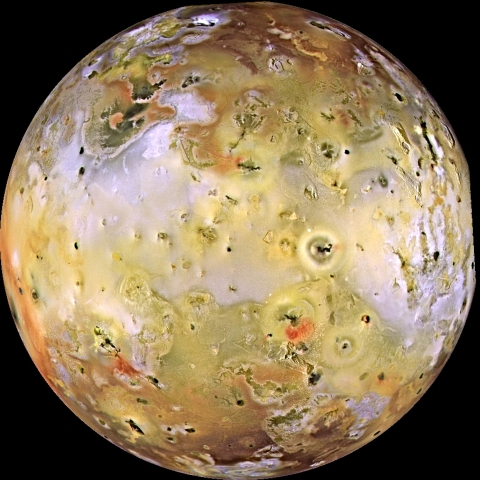
Ganymede
Ganymede is the largest moon in the solar system. It is even bigger than the planet Mercury! Like Earth, it has an iron core that creates a magnetic field. It is the only moon to have one. This can cause auroras at its poles, like on Earth. On Ganymede’s surface is an approximately 800 km-thick shell of ice.
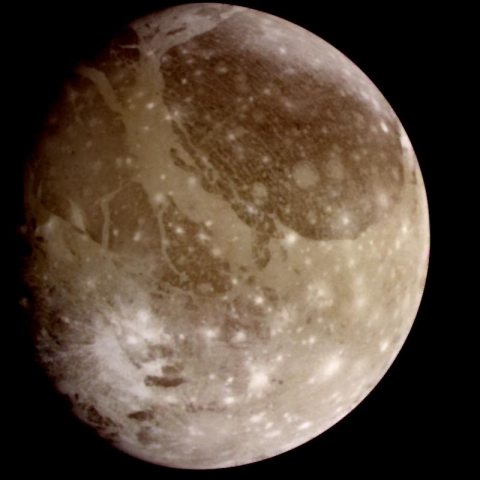
Callisto
Callisto is the least well known of the four Galilean moons. On its surface are many ancient craters. They were likely created early in the formation of the solar system.
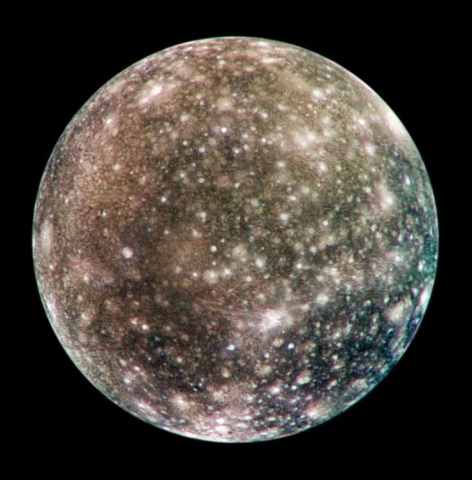
Europa
Europa is a very watery moon. Astronomers think it may have twice as much water as Earth! Ice covers much of Europa’s surface. Below the ice is thought to be a liquid-water ocean. And where there is water, there may be life.
Europa is easy to recognize because of the many squiggly cracks that cross its surface.
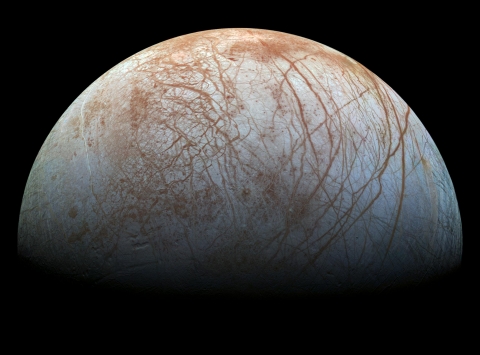
Satellites of Saturn
Like Jupiter, Saturn also has a huge number of moons. To date, it has 53 confirmed satellites with 29 awaiting confirmation. The two most well-known are Titan and Enceladus.
Titan
Titan is the second largest moon in the solar system. It is only a little smaller than Ganymede. The air on Titan is the most like Earth's. It is also the only other place in the Solar system to have rivers, lakes and seas. In 2005, the Huygens probe explored Titan.

Enceladus
Enceladus is often called the icy moon. It is the whitest, most reflective moon in our solar system. Enceladus orbits within the densest parts of Saturn’s rings. In 2005, the Cassini spacecraft observed geysers at its surface. These spouts propelled gases into space at the speed of 400 meters per second! Scientists think that those gases erupt from an ocean under its icy shell.
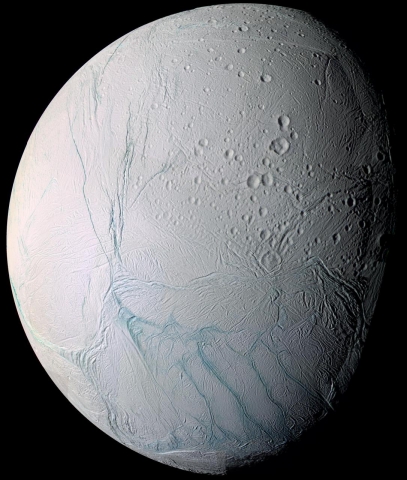
Satellites of Uranus
Uranus has 27 known moons. Unlike all other moons, their names are from literature, many from Shakespeare’s works.
Satellites of Neptune
Neptune has 14 known moons. Like the planet, all the moons are named after sea gods and nymphs from Greek mythology.
Its largest moon, Triton has the coldest known surface in the Solar System. Like Titan, Triton has an atmosphere that is mainly made of nitrogen. The surface of Triton is so cold, that the nitrogen is in the form of ice. It is the only large moon in our Solar System that orbits in the opposite direction of its planet. The term for this is a retrograde orbit.
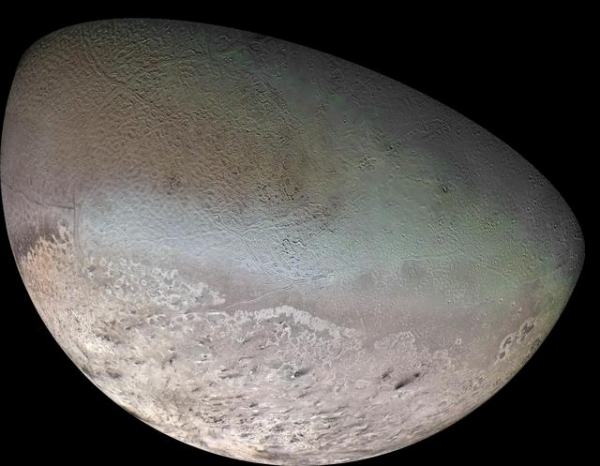
How far out does the Outer Solar System go?
The outer limit of the Oort Cloud defines the outer edge of the Solar System. The Solar System is so big, that we cannot even put a picture on this page that could show you the distances to scale. To get an idea, using a marble and the desert, watch the video below.
Other Objects in the Outer Solar System
Although we have focused on the planets and their satellites, there are many other objects in the Outer Solar System. You can read more about asteroids and comets, meteors, meteorites and meteoroids and dwarfs planets in our other Backgrounders.
Learn More
This article by Let’s talk Science presents our home galaxy and how scientists have found what shape it is.
NASA’S Space Place - The Solar System
Educational website for elementary kids to learn about our Solar system, including experiments and answers to common questions about space science.
Nine Planets - Solar System Tour
This interactive tool allows the self-guided exploration of the Solar System.
If the Moon Were Only One Pixel
An animated website that illustrates accurately the vastness of the Solar System.
References
NASA. (n.d.). Enceladus - In Depth NASA Science - Solar System Exploration
NASA. (n.d.). Callisto - Overview NASA Science - Solar System Exploration
NASA. (n.d.). Europa - Overview NASA Science - Solar System Exploration
NASA. (n.d.). Ganymede - In Depth NASA Science - Solar System Exploration
NASA. (n.d.). Io - Overview NASA Science - Solar System Exploration
NASA. (n.d.). Moons of Neptune - Overview NASA Science - Solar System Exploration
NASA. (n.d.). Moons of Uranus - Overview NASA Science - Solar System Exploration
NASA. (n.d.). Our Solar System
NASA. (n.d.). Outer Solar System.
NASA. (n.d.). Saturn - Overview. NASA Science - Solar System Exploration
Williams, D.R. (2019, October 21). Planetary Factsheet. NASA Space Science Data Coordinated Archive